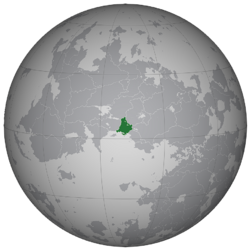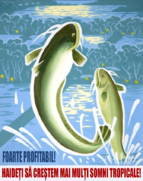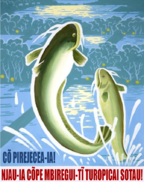Hondonia: Difference between revisions
(Updated population and GDP to allow ISU calculation) |
Native Qazh (talk | contribs) No edit summary |
||
| Line 1: | Line 1: | ||
{{WIP}} | {{WIP}} | ||
{{Region icon Anteria}} | {{Region icon Anteria}} | ||
{{Country icon Hondonia}} | |||
{{Infobox country | {{Infobox country | ||
| conventional_long_name = The Republic of Hondonia | | conventional_long_name = The Republic of Hondonia | ||
Revision as of 22:40, 14 August 2022
This article is incomplete because it is pending further input from participants, or it is a work-in-progress by one author. Please comment on this article's talk page to share your input, comments and questions. Note: To contribute to this article, you may need to seek help from the author(s) of this page. |
The Republic of Hondonia | |
|---|---|
Anthem: Marșul unității (Rouman) Mãrași mbișajarui (Tuyan) [placeholder] (Myacha) ("the march of unity") | |
 Hondonia in Thuadia | |
| Capital and largest city | Demirest |
| Official languages | |
| Recognised Regional languages | |
| Ethnic groups (2011) | see here
|
| Religion (2011) | |
| Demonym(s) | Hondonian |
| Government | Unitary semi-presidential republic |
• President | Mihai Ciobanescu |
• Prime Minister | Codrin Suta |
| Legislature | Vorbirea |
| [PLACEHOLDER] | |
| [PLACEHOLDER] | |
| Establishment history | |
• Independence | 8 January 1822 |
• 1st Unification | 5 December 1878 |
• 2nd Unification | 1 August 1955 |
• 3d (last) Unification | 12 March 1961 |
• Current Constitution | 20 April 1989 |
| Area | |
• Total | 368,767 km2 (142,382 sq mi) |
| Population | |
• 2022 estimate | |
• 2011 census | 17,419,142 |
• Density | 47/km2 (121.7/sq mi) |
| GDP (PPP) | 2021 estimate |
• Total | ( |
• Per capita | ( |
| GDP (nominal) | 2021 estimate |
• Total | ( |
• Per capita | ( |
| Gini (2020) | medium |
| HDI (2020) | high |
| Currency |
|
| Time zone | UTC-5 |
| Date format | dd.mm.yyyy |
| Driving side | right |
| Calling code | +37 |
| Internet TLD | .hd |
Hondonia ([hʌnˈdɔniə] ; Rouman: Ondonia ([ɔnˈdoni(j)a]
; Tuyan: Õnõg̃uai [ˈõnɔ̃w̃aɪ]
; Myacha: Òntónta Mêykěyǔ [oˀn˨˩toˀn˦˥.tɐˀ˥ meˀj˥˦˩ ke˩˨˥ ju˩˨˥]), officially The Republic of Hondonia, is a country located in central southern Thuadia. It is bordered by the Laurentine gulf to the south, Koldovia to the southeast, Mustelaria to the east, Yukranistan to the northeast, Tiskaiya to the north, and Merrydia to the west. Hondonia is comprised of 12 Provinces, the Insula Giulce Territory, and the Demirest Capital Region, which is also the country's largest city. Hondonia covers an area of 368,767 square kilometers (142,382 sq mi), with a population of around 17 million. Hondonia's rich cultural heritage reflects influences by various Indigenous civilizations, Moldanian settlement, slavic migration, and various immigrants from various areas around the world. Rouman is one of the official languages of the ocuntry, serving as a lingua franca, alongside the standard Tuyan and Myacha langauges.
Hondonia has been inhabited by various indigenous people since at least 30,000 BCE, including the Tayamo, Myacha, [Placeholder], and the Tuy-Suy tribes. The Moldanian landed first in Insula Păsărilor in April 17th 1578, and a month later on the coast of what became Noua Rumânie. By the mid-17th century they colonized majority of today's Hondonia, establishing the Kingdom of New Roumania (Țara noii Rumâniei), with Borcea Noua, now known as Demirest, as its capital. Independence from the Moldanians was achieved on the 8th of January of 1826, with what is now Hondonia emerging as the Free Kingdom of New Roumania (Țara liberă a noii României). In the following century the country saw numerous armed conflicts within itself primarily due to ideological factions leading to the Hondonian civil wars. After several internal issues including two separate civil wars, on the 12th on March of 1961 the current Republic of Hondonia was founded, and has seen an increase in stability over the next decades. On June 5th 2008 Hondonia joined the Sekidean Union.
Etymology
The name "Hondonia" is derived from the last name of the Moldanian explorer Michael Hondonescu (Moldanian/Rouman: Mihai Ondonescu), who, along with a group of other explorers, helped explore parts of what is known today as the provinces of Noua Rumânie de Nord, Mihaiești and Raumbatenia. After the independance of the Noua Rumânie colony from the Moldanian empire in 1822, it was renamed to Hondonia (Rouman: Ondonia) after the explorer, and the people started calling themselves Hondonians (Rouman: Ondoni) to distance themselves from the Moldanian empire.
History
Prehistory
Indigenous people inhabited the territory of modern day Hondonia by at around 30,000 BCE, various hunter-gatherer societies existed near the present-day province of Noua Rumânie de Nord, they traded with one another and with cultures living in the Demir River valley. The oldest archaeological finds are from the Calul Mare archaeological site and Cioară Albă archaeological site in the Demir Valley 100 kilometres (62 mi) northeast of Demirest in the Noua Rumânie de sud province, these sites date from ~30,000-10,000 BCE. At Piatra Mare archaeological site and other sites, traces from the Archaic period in Hondonia (~10,000–2,000 BCE) have been found. Vestiges indicate that there was also early occupation in the regions of Stânca Albă, Tibitau and Ciuperci de Piatră in the Munții de tunet mountains. The oldest pottery discovered in Hondonia, found at Inaești archaeological site, dates to ~9,000–7,000 BCE.
Pre-Colonization
In the year ~861 the Tùocóng Empire was founded around modern day Mal ai lupilor on the coast of lake Arani with the annexation of the Pàcóng kingdom by the aformentioned Tùocóng, both kingdoms belonging to the Myacha people. The empire spred accross the Munții de tunet mountains, conquering majority of the mountain range by ~1008. In the mid 12th century slavic tribes moved into the eastern parts of the [REDACTED] mountains from modern day Tiskaiya, settling around lake Crutoi Iezero (also known as Krutoj Jezero in the Kodin language, or as Steep Lake) and assimilating with local tribes of to the [Placeholder] people, resaulting in the unique new culture and language of the Kodin people.
During the same time on the coast of modern day Hondonia, the coastal Tayamo kingdom of Reuceu, under the rule of Kaisakama the Great, was able to subjugate most of the Tayamese kingdoms under one flag, and ending the era of waring kingdoms. Various smallers tribal states started appearing in the jungles of southern Hondonia and in the vacinity of the Tùocóng empire, with influences from each nation respectfully. The Reuceu kindom remained peacefull for two centuries untill the Kairi island rebelion which resaulted in the independence of the Kairi kingdom and various smaller rebelions in Hrastmozh and Giulce island.
In the late 14th century the Tùocóng empire fell into a civil war due to unrest with the raised taxes implimented by [Placeholder], the ruler of the empire at the time. The war was fought by the Loyalists supporting the [Placeholder] (also spelled as [Placeholder], the title used for a ruler of the Tùocóng empire), and the Reds, called so due to the red bands they wore to identifie themselves, who opposed the current [Placeholder]. The Kodin influenced regions were particulary against [Placeholder] [Placeholder], they were able to win the war in the northern regions and establish a new kingdom, known as the Cherenchaustuo kingdom, while the southern areas were able to fend them off and remain the Tùocóng empire. The Cherenchaustuo and the Tùocóng empire engaged in various conflicts and wars for influence over tribes in the feet of the mountains controlled by each nation over the next decades.
The only large unified nation in the rainforests of Hondonia was the Tuyan Federation, which was a loose federation of Tuyan tribes engaging in trade and mutual protection.
Colonization
Geography
Climate
Biodiversity
Government and politics
Foreign affairs
Military
Administrative divisions
| Provinces of Hondonia | |||||||||||||||||||||||||||||||||||||||||||||||||||||||||||||||||||||||||||||||||||||||||
|---|---|---|---|---|---|---|---|---|---|---|---|---|---|---|---|---|---|---|---|---|---|---|---|---|---|---|---|---|---|---|---|---|---|---|---|---|---|---|---|---|---|---|---|---|---|---|---|---|---|---|---|---|---|---|---|---|---|---|---|---|---|---|---|---|---|---|---|---|---|---|---|---|---|---|---|---|---|---|---|---|---|---|---|---|---|---|---|---|---|

Cost dei Pluei [Placeholder] (Mẹtseyenọsehéné) Sant-Demir- Sier-Mar Frontarici Ensul de Jultxe Micailici [Placeholder] [Placeholder] Noù Roumanie de Nord Noù Roumanie de Sied [Placeholder] (Pomẹtsevọsehéné) Tuçong [Placeholder] Taiamenie | |||||||||||||||||||||||||||||||||||||||||||||||||||||||||||||||||||||||||||||||||||||||||
| |||||||||||||||||||||||||||||||||||||||||||||||||||||||||||||||||||||||||||||||||||||||||
Largest settlements
Economy
Blue text reads "Highly profitable!"
Red text reads "Let's raise more tropical catfish!"
Demographics
Ethnic groups
Languages
Religion
Culture
Literature
Visual arts
Music
Popular culture
Cuisine
Sports
Healthcare
Education
See also




